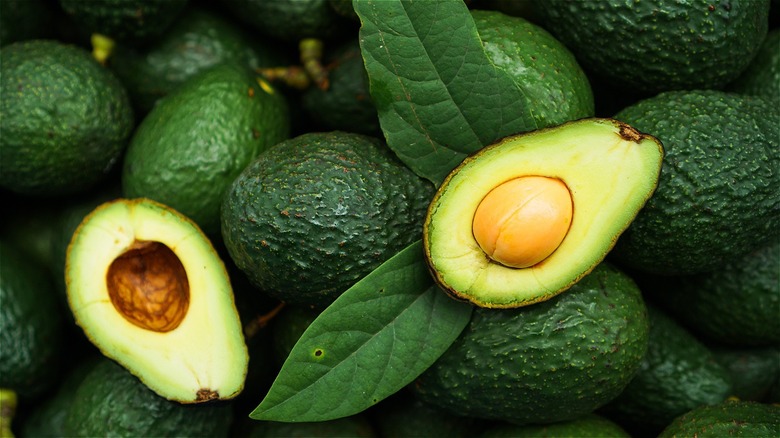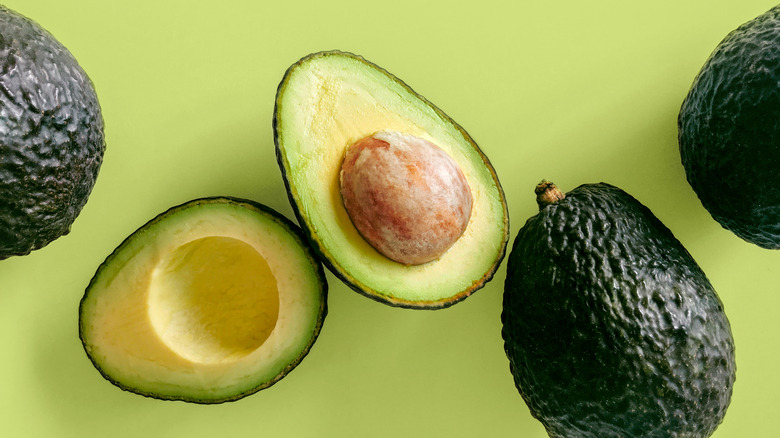Hass Avocados Were Started By A Postal Worker
Avocados are certainly having a moment in the sun. They are a staple ingredient in dishes all around the world, including but certainly not limited to guacamole, cobb salads, poké bowls, sinh tố bơ, and of course, avocado toast. Avocados have even been popping up in recipes for ice cream and other indulgences. Whether some of these creations will be a flash in the pan has yet to be determined. But the pastel green-fleshed fruit used to make them has been gaining in popularity for decades – especially one particular version of it.
An important thing to know about avocados is that there are literally hundreds of species of them on the planet, from Gwen to Pinkerton to Zutano to Bacon to Fuerte, according to California Avocados. One of the most well-known and most frequently consumed varieties, however, is the Hass avocado. Smithsonian explains that Hass avocados have made a giant impact in the culinary realm over the years, and without the curiosity of a 1920s mail carrier, they likely would not exist.
Hass avocados were named for their original harvester
Like its inventor, the Hass avocado was a transplant — except one was a geographical transplant and the other was botanical. Rudolph Hass was born and raised in Milwaukee, Wisconsin, according to OnMilwaukee — quite a trek from the Golden State, where he and his wife relocated. He became a postal worker in La Habra Heights, California, and decided to buy avocado seeds to grow in his grove. When his seeds — of which he didn't know the exact variety — didn't flourish, he affixed them to the Fuerte trees that were growing there at the time, per Avocados from Mexico. This process, called grafting, according to the Botanical Garden at the University of California-Berkely, is achieved by joining a bud or branch from one plant to a different plant to help promote new growth.
After a couple of long years, a fresh result eventually came to be — an avocado Hass and his family had never seen nor tasted before. Smithsonian notes that the fruit he had harvested possessed a nutty flavor, creamy, oily texture, and dark, thick, leathery, wrinkled skin. The Hass avocado was born. Today, the consumption of avocados is around 344% greater than it was in the '90s, according to the Hass Avocado Board (via YouTube), which only goes to show consumers' adoration for them.
Next time you scoop a generous helping of mashed avocado onto a hearty slice of toast or dunk crispy chips into a bowl of chunky guac, you can feel free to thank Mr. Hass.

